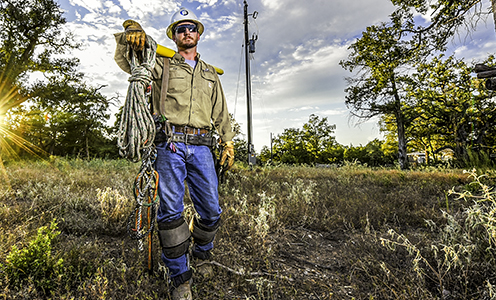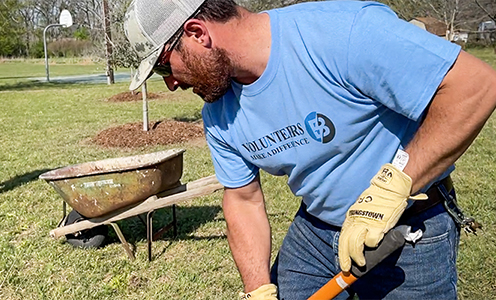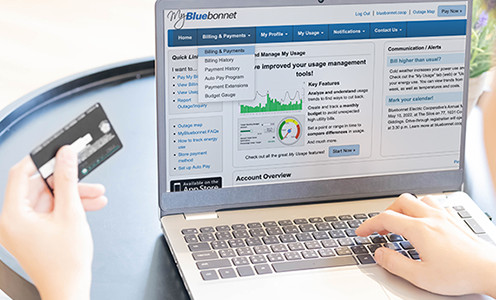Power on
Recent news
By Sharon Jayson
More than a year of living in a pandemic means we’ve never thought so much about health and hygiene. Being mindful of everything from the air we breathe to the surfaces we touch (or don’t touch) has turned many of our homes into safe and sanitary sanctuaries.
The technology industry has noticed. Innovations in electronic devices and other tech items are streaming into the marketplace, with an emphasis on cutting-edge solutions to purify the air, clean our surroundings and refine touchless technology.
Every January, tech innovations and thousands of new products with the potential to transform lives are presented at the massive CES (formally called the Consumer Electronics Show), usually held in Las Vegas. This year’s CES, produced by the Consumer Technology Association, occurred completely online. Nearly 2,000 companies unveiled products.
The first-ever digital CES showcased large and small air purifiers, voice-activated and touchless appliances with ultraviolet light sanitizers, and anti-germ gadgets galore, as well as items to monitor household water and electric use.
Clearing the air
Individuals with allergies or asthma are well acquainted with air purifiers, which remove particles and pollutants to improve indoor air quality. But the COVID-19 virus made air quality an obsession and purifiers are having a moment — especially ones that are more mobile, energy-efficient and effective at air filtration. HEPA air filters — long considered the industry standard — have been joined in the purifier arena by UV light and other forms of virus-disinfecting technology.
Many new air purifiers are not cheap or small and are more suited for businesses. One purifier in the in-between size and price range is the Brondell Pro, which lists five types of protection, including a UV disinfection lamp and a “plasma generator,” which generates negative ions to eliminate microorganisms. It cleans a 538-square-foot area and is $650.
You’ve probably seen 3M’s Filtrete air filters for home HVAC units. The company rolled out two air purifiers — one for smaller spaces (150 square feet) for $275 and a second for larger areas (310 square feet) for $329.

Other new air purifiers are smaller and mobile. The LG PuriCare mini air purifier weighs in at a little over 1 pound and quietly runs for up to 8 hours on a rechargeable battery. It can be operated via a smartphone app and costs $150. At the same price and weight is the new Luft Duo portable air purifier. It doesn’t require a filter, cleans about 120 square feet and costs $150. The FrescheAir purifier fits in your your vehicle’s cup holder, is motion-activated, plugs into a USB car charger and costs $100.
Touch-free appliances and disinfecting devices
Many of the top touch-free devices at CES for the kitchen and bath are pricey, such as Kohler’s Konnect touchless kitchen faucet (voice- and motionactivated, $950), which monitors water use. It’s more costly cousin, a Kohler hands-free “no-touch flush” toilet, opens and closes automatically and flushes with a wave of the hand. Moen has a similar “smart faucet.”

Kohler touchless and vice-activated kitchen faucets respond to commands like 'fill my pot.'
Remaining in the very expensive but interesting category is an LG refrigerator that automatically opens and closes with voice commands, complete with UV light built into the water dispenser, at about $3,000.
A more practically priced home device from Kohler and powered by Phyn is a DIY home water monitor that can detect leaks and tell you how much water each fixture uses. It is expected to cost about $300.
The 2Office Antimicrobial Backpack by Targus can hold a laptop and has an antimicrobial-infused protective finish on major touch points that creates a cleaner surface to help prevent microorganism growth. There’s no guarantee that it will stop the COVID-19 virus, though. It will cost about $120.
Numerous gadgets touting germ-killing UV light sanitizers showed up at CES, but consumers should read the fine print. These gentler versions of high-intensity UV-C lights used in hospitals usually require extended shine time to eliminate germs and some viruses from a surface, and there’s no promise they will kill the COVID-19 virus.
While these purifying products are taking center stage, cleaner indoor air and germ-free surfaces will probably remain in demand long after pandemic fears subside.
It’s in the details: tracking home energy use
Working and learning from home may become part of the post-pandemic lifestyle. So much home-based activity has led to increased electric use in many households, according to multiple studies. One study released earlier this year by Sense, a home energy monitoring company, found that average electric use in U.S. homes increased 9.3 percent between April and August 2020, compared with the same period in pre-pandemic 2019.
Parks Associates, a Dallas-area market research and consulting company specializing in emerging technology solutions, found 45 percent of more than 10,000 households surveyed in early 2021 adjusted their thermostats to save energy and money, and 42 percent had switched from incandescent light bulbs to CFL or LED bulbs, both more energy efficient.

One product shown at CES — the Square D Wiser Energy smart home monitor system by Schneider Electric — lets you track and manage home energy use. Installed (by an electrician) into the house’s electrical or breaker panel, the smart device provides (via an app) real-time energy use information for your appliances, notifications to tell you when devices are on or off, and solar panel generation (if you get an add-on). It starts at $200.
Download this story as it appeared in the Texas Co-op Power magazine »
Bluebonnet Electric Cooperative’s Board of Directors unanimously voted during its April meeting to return $4.7 million in capital credits to member-owners of the cooperative. Beginning in May, Bluebonnet’s members will receive a credit on their electric bill for their share of $4.7 million in capital credits, a $500,000 increase over last year.
“Approving the amount to return in capital credits is one of the best things we get to do as Directors on behalf of our members,” said Ben Flencher, board president. “The credit our members will see on their bills in May is one of the many benefits of being a member-owner of Bluebonnet. During the last few years due to growth and our financial success we have been able to return record amounts to our members.”
Capital credits are excess revenue above what it takes to run the co-op. Every April, Bluebonnet’s Board of Directors approves the capital credits payment during its April meeting. When determining how much to return to members, the Directors consider the impact that the amount returned to members will have on electric rates and the co-op’s financial strength.
The amount each member gets back depends on how much electricity they used in previous years through 2020 and how long they have been a Bluebonnet member. Current members will see a credit on their May electric bill for their share of this year’s capital credits retirement. Former members who are still owed a capital credit will receive a check in May or June.
Since 2005, Bluebonnet has returned $66.7 million to its members in capital credits.
“The ability to return millions of dollars to our members is possible because of prudent financial decisions and responsible daily operations,” said Matt Bentke, Bluebonnet’s general manager. “Bluebonnet’s Board of Directors and all employees have great respect for our fiduciary duty to our members. That in turn has led to the financial capacity to provide record capital credits to our members in 2021, and to reinvest more than ever in the Bluebonnet electric system, employees and the communities we serve.”
Story by Pam LeBlanc
Never mind the snake I nearly stepped on, or the feral hog that came crashing out of the underbrush. I chalk up my recent backpacking trip at Lake Somerville State Park as a smashing success.
Most nights, I’d rather sleep in a tent, listening to coyotes yip or catching the stale perfume of a passing skunk, than snooze between high thread-count sheets at an exclusive resort.
The outdoors works like a salve on my soul — plus, carrying everything I need on my back for a night in the wilderness makes me feel empowered and capable. And in these days of stress and uncertainty, who doesn’t need a little dose of nature to set our psyche straight? Backpacking can seem daunting if you’re new to it, and the thought of hiking down a trail hauling only the bare minimum can conjure up images of blisters, animal invasions and sleepless nights.
That’s why I always suggest that people new to backpacking try a shakeout run at a state park that offers a variation on backcountry or “primitive” camping, which means campsites aren’t near roads or parking lots and usually lack nearby amenities such as bathrooms and running water.
I enlisted the help of friend Joe Stafford, a Bluebonnet Electric Cooperative employee who designs pages in this magazine, for my recent overnight adventure at Lake Somerville State Park. He’s no camping newbie so was game to explore the place, which I haven’t visited since I was a college student at Texas A&M University 35 years ago.
The park, which is divided into the Nails Creek Unit, the Birch Creek Unit, a connecting 13-mile trailway, and an adjacent public hunting ground, covers nearly 9,000 acres and is just north of U.S. 290 between Brenham and Giddings.
It’s the only state park in the Bluebonnet service area with primitive camping sites that are miles from the car or conveniences.
Reservations are not accepted for primitive camping sites, but you can call the day of your trip to find out if one is available, and they’ll hold it for you. That’s what I did.
On the designated day, we stopped by the Nails Creek Unit headquarters to pick up our permit. Office manager Lauren Kubica let us know that two pedestrian bridges in the park were washed out by flooding in recent years, meaning we couldn’t hike directly to our destination.
To increase our time on the trail, she suggested we park at the Nails Creek access point on County Road 125, a 7-minute drive from the unit headquarters. From there we’d have about a 3.5-mile hike to the Newman Bottom primitive camping site, where we would pitch our tents. (If you want a shorter walk, you can park at an access point west of Flag Pond and walk a mile to reach the same spot.) Kubica said a pair of bald eagles and their juvenile offspring were nesting in a tree on a stretch of trail called Waldo’s Loop.
“We’re known for hiking, and fishing is a big deal especially during the white bass run in spring,” Kubica said of the park, which opened in 1970. “We get a lot of equestrian users as well.”
Flag Pond, near where we were headed, draws an assortment of birds, which lures eager tourists adorned with binoculars. Even alligators have been spotted in Lake Somerville State Park.
“Seeing all the eagles, the different hawks, and even white pelicans, that’s one of the big things here,” Kubica said. “I think it’s unique here. It’s great for physical and mental health.”
Lake Somerville was built as a flood control project to protect homes downstream on the Brazos River. It did its job when flooding hit every year from 2015 to 2018, but high waters killed off swaths of trees in the park, inundated the boat ramp pavilion at the Rocky Point area and washed out stretches of trail. Some facilities are still closed, including the Cedar Creek camping area.
At the Nails Creek trail access site, Joe and I locked the truck, made a few last-minute gear adjustments, slung our packs — which weighed about 30 pounds, including our water — over our shoulders and started moving.
It felt a little like walking down the Yellow Brick Road to Oz at first, only our road was made of bright green grass set against a gray-brown background of brush. As we trudged past groves of elm and oak and listened to chirping birds, I could feel my heartbeat slow as we retreated from the sounds of civilization. After about half a mile, we reached Flag Pond, a 350-acre oval of silver water with marshy edges. We curved around it, detouring onto Waldo’s Loop to look for the bald eagles.
It wasn’t hard to spot their nest. Eagles build them big — an average of 4 to 5 feet across and 2 to 4 feet deep, according to the National Eagle Center. This one looked like a sofa-sized bundle of sticks resting in the fork of some branches in the tallest dead tree in a field of dead trees. Then we spotted two adult eagles, circling majestically overhead.
We ogled the big, white-faced birds for 20 minutes, then pressed on, following the flat trail for a mile around the north end of the pond.
I came to a screeching halt when Joe hollered a warning just a nanosecond before I planted my foot atop a 3-foot snake stretched across the path. There went my heart rate! After I caught my breath, I whipped out my camera and snapped some photos, which clearly show I wasn’t in danger. The slow-moving reptile was a rat snake, not a dangerous pit viper, though they both have triangular-shaped heads. Venomous pit vipers have catlike, vertical pupils, by the way. Nonetheless, watch where you step; plenty of cottonmouths and rattlesnakes inhabit the area.
The wildlife show continued for the next 24 hours. White-tailed deer popped up their heads to gawk at us from a field of tall grass, an armadillo rustled and scratched its way through the scrub, and the next morning, a mud-covered feral hog that must have weighed at least 150 pounds barged through the brambles just behind us. We saw hawks and dragonflies, and a great blue heron that caught a fish so big it gave up and dropped it back in the water like it was returning a purchase from the Piggly Wiggly.
Remember to keep your distance from any animals: Harassing wildlife is against park rules.
We set up camp at the Newman Bottom primitive site, a keyhole-shaped clearing in the thick brush. That’s where we got another surprise that rookie backpackers might appreciate — two picnic tables and a firepit. (There was also a chemical toilet not too far from the site). We also had a cell signal at our campsite, which could be considered a benefit or a bad thing, depending on how much of an escape from the world you want.
Tents up and sleeping pads inflated, we lit our Snickers-sized portable camp stoves to heat water for dinner. A nearby clearing would make for great stargazing on a cloudless night. Joe made a fire (most state parks allow ground fires only in designated pits like the one we found), and we swapped stories until we couldn’t stay awake any longer. I crawled into my tent, zipped myself into my lightweight sleeping bag, rated for temperatures as cold as 15 degrees, and laid my head on a pillow of wadded up hiking clothes. I woke up once, briefly, to the screech of an unknown critter but slept soundly otherwise.
The next morning, I boiled a pot of water for hot tea, then struck out solo to explore. I tromped past a quarter mile of marshy terrain to get to Flag Pond at dawn. When I got there, I found dozens of turkey buzzards roosting in dead trees, gazing at the mist-covered body of water, all lit in the pink of a Texas sunrise.
I’d have been happy to climb up a tree and join them, but Joe and I wanted to get back to see the eagles again. We spent 15 minutes gathering our headlamps and toothbrushes, deflating our sandwich-thick sleeping pads and breaking down our tents, then hit the trail again, trying to remember where the snake had slithered out of our way. We breathed in lungfuls of fresh air. When we reached the big nest, we got another surprise: A juvenile eagle sat patiently in its treetop home, with no parents in sight. We spotted one of them later, scanning a nearby creek for breakfast to deliver to the family.
In another hour, we were back at our truck.
Here’s the thing: Lake Somerville State Park isn’t far from most anyone in the Bluebonnet Electric Cooperative service area. It’s not exotic, but even nearby places like this state park serve up a respite from the ordinary, and inject a little adventure in everyday life.
And that’s something I’ll never turn down.
If you go
Advance reservations are not accepted for the primitive camping sites at Lake Somerville State Park, but you can get a same-day reservation by calling either the Nails Creek Unit at 979-289-2392 or the Birch Creek Unit at 979-535-7763. We stayed at the Newman Bottom site, but two other primitive sites are open — Flag Pond and Wolf Pond, on the Birch Unit side. A primitive camping permit costs $10; park admission is an additional $4 per adult (free for ages 12 and younger).
What to eat
Freeze-dried backpacking food doesn’t have to taste like heavily salted cardboard. A few years ago, while working on a newspaper article, I discovered Packit Gourmet, an Austin-based company that makes the best backpacking meals I’ve tried. And I’ve tried a lot of them.
Sarah Mullins Welton, who grew up canoe camping with her parents, Jeff and Debbie Mullins, created the company as a class project while she was working on her graduate business degree at the University of Colorado Boulder. She missed the meals her mother had made out of fruits and vegetables she had dehydrated at home.
Welton and her mother worked together to come up with a product line of meals. Backpacker magazine tried them and awarded the company an editor’s choice award for its tortilla soup. Today the company makes a line of pre-packaged meals with dinners like Texas State Fair Chili to Dottie’s Chicken and Dumplings, breakfasts such as West Memphis Grits Soufflé and desserts like banana pudding.
What to put in your pack
Infographic by Pam LeBlanc and Joe Stafford; Photo by Sarah Beal
Modern innovations and lightweight materials make it possible to keep your pack as light as possible.Here’s a look at a setup for a one- or two-night mild-weather backpacking trip.
A: Baseball cap
Head protection is essential gear. In cool weather, a merino wool cap is lightweight and warm.
B: Buff gaiter
These stretchy fabric tubes can be used to keep your neck warm, as a head covering or even an emergency towel.
C: Camp shoes
Giving your feet a chance to rest and dry after a long day's hike, camp shoes should be comfortable and lightweight. Shower shoes, flip-flops and classic Croc clogs are popular budget choices.
D: Camp clothes
A clean T-shirt and bottoms reserved for camp and sleeping.
E: Backpack
This Osprey Aura 50-liter pack is one of hundreds of designs to choose from. Newcomers might want to try out a borrowed pack before purchasing. Among considerations for choosing are price, weight, volume and comfort.
F: Tent
These days, technology has made tents smaller and lighter than ever. Shown is a Big Agnes Copper Spur that’s easy to put up and fits two. It weighs 3 pounds, 2 ounces.
G: Lighter
A mini lighter is a lightweight way to start fires and to light stoves that lack built-in ignition.
H: Stove
Shown: BRS 3000; plus a can of fuel (a 110-gram container works for just one or two nights). This version requires a small lighter or match to spark; some tiny stoves come with push-button igniters. Popular brand names are Jetboil and Pocketrocket.
I: Cooking pot
For re-hydrating freeze-fried meals and, of course, for morning coffee or tea.
J: Sleeping bag
Serious backpackers own more than one, providing weather-appropriate options.
K: Sit pad
Small accordion cushions are light and can be stuffed in an outer pocket of your pack.
L: Inflatable sleeping pad
Shown is a Sea to Summit Ether Light XT. Makes the ground more comfortable and provides insulation.
M: First aid kit
This DIY kit includes bandages, gauze, tape, aspirin, small scissors, Benadryl for allergic reactions and antibacterial ointment. Don’t forget tweezers for close encounters with cacti.
N: Water bottles
One that fits in a pocket of your backpack for easy access, plus a plastic water reservoir (shown: Platypus) filled with water — and a water filtration system (Sawyer Squeeze, a UV light purifier, or chlorine dioxide drops or pills all work well.)
O: Tiny multi-tool
The mini pliers can come in handy for making repairs in the field. A small folding knife is another popular option.
P: Whistle/compass combo
A whistle for emergencies and a compass for navigation in one small item.
Q: Toiletries
Small bag with toothbrush, toothpaste, eye care, sunscreen, toilet paper and any personal medicines.
R: Headlamp
S: Sunglasses
T: Freeze-dried meals
The market has been filled in recent years with these extremely lightweight, tasty meals. Mountain House is a popular, affordable option, and the Packit Gourmet brand is made in Austin.
U: Titanium spoon
V: Snacks
High energy treats like trail mix and Kind bars
W: Ditty bag
Handy access to trail map and snacks to clip around waist
Ready for some backcountry camping?
Texas serves up good backpacking terrain if you don’t mind some driving. Big Bend National Park, Big Bend Ranch State Park and Davis Mountains State Park in West Texas all have backcountry campsites. Just to the north of those parks, Guadalupe Mountains National Park is home of the tallest peak in Texas (8,751 feet) and has good backpacking. Closer to Central Texas, remote sites can be found at Enchanted Rock State Natural Area, Pedernales Falls State Park and Colorado Bend State Park. The state’s longest footpath, the Lone Star Hiking Trail, extends 92 continuous miles; if you take all the side loops, it’s 129 miles long. The trail is in the Sam Houston National Forest, near Conroe in East Texas.
Eight tips for backpackers
1. Choose a good backpack. Be sure the waistband sits comfortably on your hips, where you’ll carry most of the weight, and look for padded shoulder straps. Backpacks come in a range of sizes and styles, but for a multi-day trip, you’ll probably want one with at least 50 liters of capacity. Make sure your pack is compatible with your water system: some come with pouches to hold water reservoirs. Consider features like separate compartments, outer mesh pockets, bottle holders and multiple access points. And pack with the heavier items at the bottom.
2. Pack light. For a nine-day trip, my fully loaded Osprey pack, minus water, weighs about 28 pounds. Extra ounces add up. To shave weight, use a lightweight tent and sleeping system and carry dehydrated food. (You’ll pay more for lighter gear, but Austin-based Gossamer Gear makes an array of whisper-light tents, packs and sleeping pads). Get rid of packaging and use the smallest of portable stoves. My teeny BRS stove cost less than $20.
3. Take care of your feet. Trail runners make magnificent backpacking shoes because they’re lighter than boots. Make sure they’re broken in before hitting the trail.
4. Prevent blisters. Injinji makes socks that encase each toe, stopping them from rubbing each other. Or try the line of blister-prevention products from 2Toms. Carry moleskin in case you develop a hot spot.
5. Stay in touch. If you’re going somewhere remote, carry a GPS tracking device like Garmin InReach or SPOT tracking device in case you need an emergency rescue. Tell someone where you’re going and when you expect to return.
6. Get in shape. Prepare for a backpacking trip by loading books or filled water bladders into your pack and hiking around your neighborhood.
7. Bring enough water. A good rule of thumb is to drink a liter of water for every two hours of hiking; more if it’s hot and sunny. If you can’t carry enough, be sure you’ll have access to water you can filter or treat. Lake Somerville State Park has no potable water on the trail.
8. “Pack it in, pack it out.” Take all of your trash with you when you leave.
Download this story as it appeared in the Texas Co-op Power magazine »






